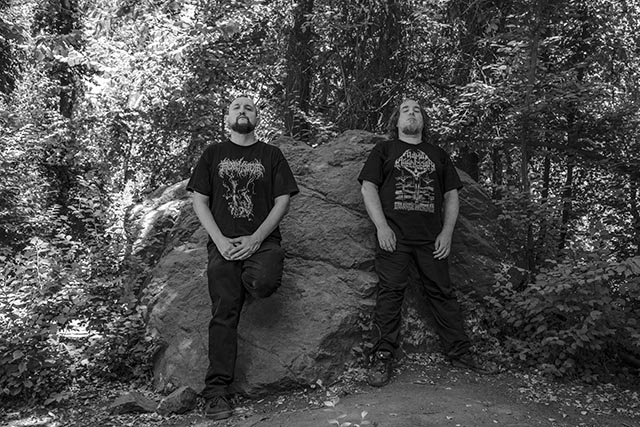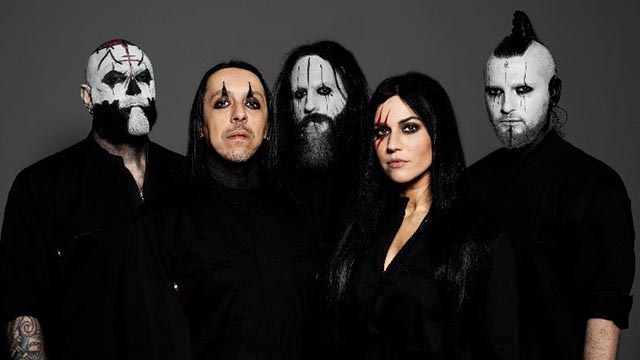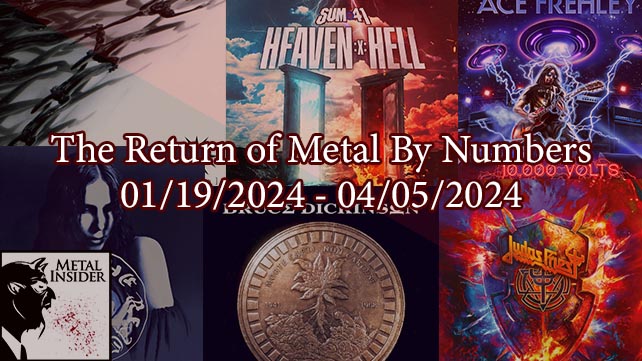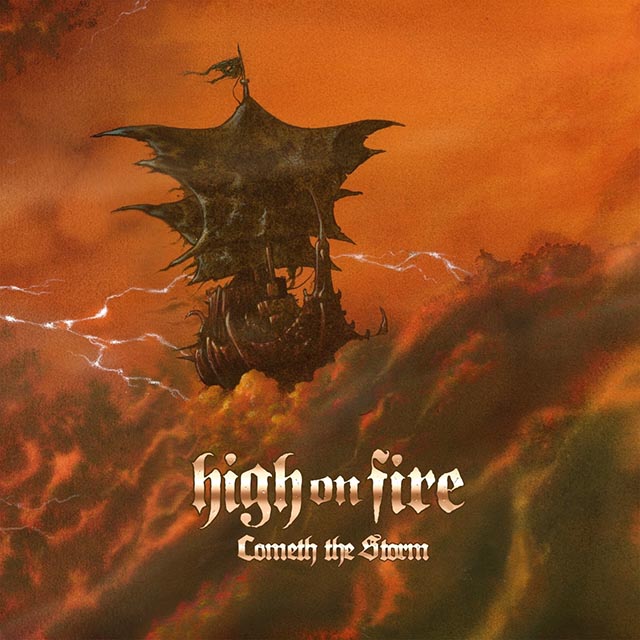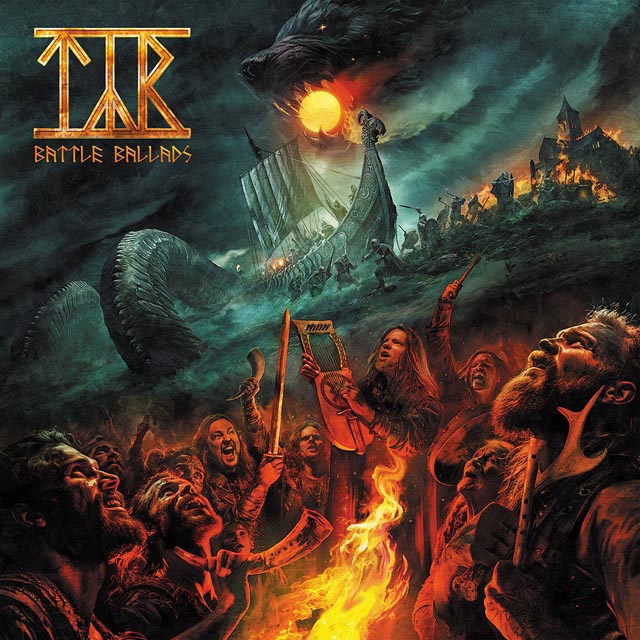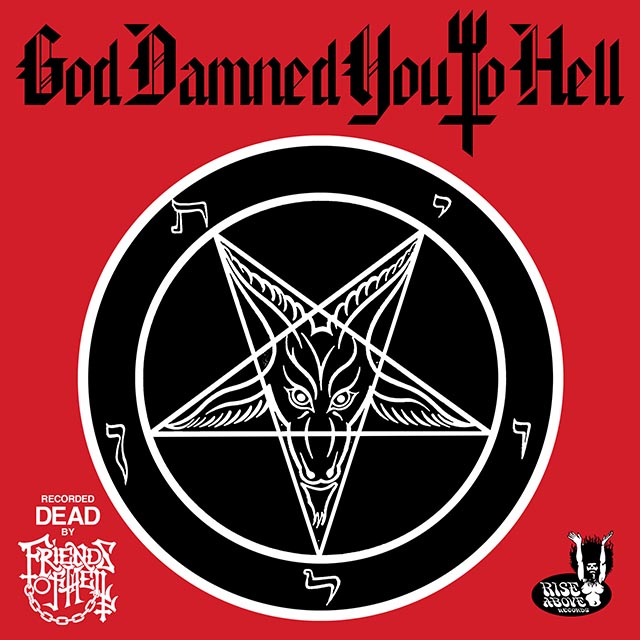 Until this week, the only record that Ozzy Osbourne fans had of the vulnerable time in between the death of guitarist Randy Rhoads and Jake E. Lee’s time in the band that started with 1983’s Bark at the Moon was the now-out-of-print Speak of the Devil. The 1982 double-live album, which featured Night Ranger guitarist Brad Gillis, along with bassist Rudy Sarzo, drummer Tommy Aldridge and keyboardist Don Airey, inexplicably only consisted of Black Sabbath songs. Now a DVD, also titled Speak of the Devil, has been released on Eagle Rock. Recorded on June 12, 1982, the show originally aired on MTV on Halloween of that year, and features Ozzy material from his first two solo albums as well as Sabbath music. Rudy Sarzo caught up with Metal Insider to talk about his time with Ozzy, as well as Quiet Riot, Whitesnake, and current endeavors like Dio Disciples and Animetal USA.
Until this week, the only record that Ozzy Osbourne fans had of the vulnerable time in between the death of guitarist Randy Rhoads and Jake E. Lee’s time in the band that started with 1983’s Bark at the Moon was the now-out-of-print Speak of the Devil. The 1982 double-live album, which featured Night Ranger guitarist Brad Gillis, along with bassist Rudy Sarzo, drummer Tommy Aldridge and keyboardist Don Airey, inexplicably only consisted of Black Sabbath songs. Now a DVD, also titled Speak of the Devil, has been released on Eagle Rock. Recorded on June 12, 1982, the show originally aired on MTV on Halloween of that year, and features Ozzy material from his first two solo albums as well as Sabbath music. Rudy Sarzo caught up with Metal Insider to talk about his time with Ozzy, as well as Quiet Riot, Whitesnake, and current endeavors like Dio Disciples and Animetal USA.
So “Speak of the Devil” is coming out on DVD, and I’m sure you’ve been asked this quite a bit, but the DVD listing is completely different from the album that came out, even though it’s the same line-up. What is the reason behind that?
This has been a confusing issue. Originally, this DVD was broadcast on MTV on Halloween night, 1982, which was the main purpose of filming the show. We started the Diary of a Madman tour December 30th, 1981 at Cow Palace. So, there was a lot of planning for this shoot that actually you could watch on the DVD, which is the final performance of the Diary of A Madman North American leg of the tour in June. So, after we shot this, which is basically the same configuration minus Don Airey, we also recorded what is also known as the Speak of the Devil CD, which was released later on, a recording of Black Sabbath songs by the same Ozzy Osbourne band. So, this is a bit of confusion—two releases with the same name with actually different content.
What was the reasoning behind that? Do you know?
I have no idea. I think it’s just a pretty cool name where they just said, ‘let’s name it Speak of the Devil,’ and that went through, I guess. But then again, it’s an interesting bit of rock history, the fact that you have two different releases with the same name.
What do you remember about that time, about that era of the band?
I remember so much. I mean everything. From playing with Ozzy from the very first phone call to audition to the band, to the very last phone call that I had as a band member. What I remember the most actually, and getting to watch footage thirty years later, it just brought it home for me, was the significance of that evening captured on the Speak of the Devil DVD release. The fact that it wasn’t too long that we shot that in late June and Randy Rhoads passed away March 19th, so it’s about basically three and a half months in between.
In order for us to continue touring, and it was decided almost immediately after the crash, to continue the tour just to keep Ozzy occupied because he got hit so hard emotionally and spiritually by Randy’s passing that we feared if he was sent home, he would have drank himself to death. So, in order to keep him alive, we just kept him occupied, kept touring. But nevertheless, the pain of going back on stage without Randy, in order for us to perform, you have to really dig in deep into your soul. Dig in deep, and realize you’re doing this is a celebration of a friend, the band member, the collaborator that you just lost. So every time you go on stage, you’re wearing the same clothes, it’s the same production, same set list, the first thing you hear, the intro to that show, was Randy playing the classical guitar on “Diary of A Madmen.” So, if that doesn’t put you in a state, as a reminder of what you’re actually doing…it was very hard. That’s my memory.
When I watch that video and realize every single night after the crash, that every single show was dedicated to Randy, and what you’re actually watching is a celebration of his music, his friendship, and it was really a triumph for us, especially Ozzy. It’s easier to get up there and just play an instrument, to really be able to sing, that’s your instrument, your voice. For Ozzy to get up there and do the performances that he did every single night after the crash, that was really a triumph of the human spirit, to be able to do that. So, that DVD is a testament to that. Something that to me separates that footage from anything else that I’ve ever seen or a DVD, because anything I’ve done thereafter, with any band doing a video, just basically you get up there and you do the best show you can. I’ve done that with Quiet Riot, with Whitesnake, but this one really sets it apart, because it’s more about the person that’s not there than actually the people on stage.
How much time did you take off before getting back on the road after a members death?
Oh my god. It was immediate. I believe it was around ten days from the crash that we actually continued with the tour. And as we were auditioning guitar players, we were actually taking breaks to go to services, to memorials for Randy, going to burials. We were numb to the whole experience. Completely numb. But, you know, sometimes you have to get lost in the music with experiences like that. Especially if you’re playing the music and you not only shared that with Randy, but that was his music. Those collaborations that you did with Ozzy, in that band. So every time I play those songs, even today, you know I might get together with people and jam on songs, “Crazy Train” or whatever, it just takes me back.
Do you remember what it was like playing with Brad Gillis for the first time?
Absolutely. This is something that when I get together with Brad, because we’ve remained friends, even after when I went back with Quiet Riot for the Metal Health version of the band. Night Ranger and Quiet Riot, we toured together in ’84, and then later on, in recent tours, we perform together. We remain friends. I always thank him for being able to finish that tour, doing justice to Randy’s music, to be able to finish the tour with dignity. Because it was very rough to find a guitar player that could play like that thirty years ago, and the reason he joined the band was because he was a friend of the band, and I’d seen him perform before with the Alameda All-Stars, which became known as Night Ranger. In the club, they were doing covers, and some of the covers were Ozzy covers, so this guy actually was performing, and we said ‘Hey, you can play rhythm like that.’ A lot of musicians could not play guitar like Randy did thirty years ago. Pretty much, the style that Randy created that’s become kind of like the staple of metal guitar, thirty years ago that was a very new, cutting edge way of playing. So, thirty years ago, Brad Gillis could actually play like that. And he came in, and actually allowed us to finish the tour with a lot of dignity.
And he was just going to be the fill-in guy all along?
I left shortly after, so I really don’t know what the status was. All I know was that Brad Gillis was already planning on releasing the Night Ranger album. Whether he was going to be on or off with Ozzy, maybe do Night Ranger here or there, I really don’t know, because I had left the band by then.
Speaking of that, is there any particular reason why you never actually performed on any of the Ozzy albums, even though you’re listed?
Well, it’s not that I’m really listed, it’s just Tommy and myself, we did not perform on ‘Diary of A Madman,’ but our photo is on the sleeve because those albums were recorded before he and I joined the band, which allowed us to only take a month in between tours. We finished the Blizzard of Ozz Tour in 1981, in late August. Then we took a month off, and then we kick started again, but with the Diary of A Madman Tour in October. Those two albums were recorded before Tommy and I joined the band, so it’s kind of hard to play on a record that you’re not really in the band (laughs). But then again, it allowed us to really continue and not take six months off to make an album and carry on, so that was good. Since Bob Daisley and Lee Kerslake were out of the picture from the Ozzy album, it literally just endured as the Ozzy Osbourne band. So, it doesn’t really say that these guys played on the record; it just says the Ozzy Osbourne band. But it’s a very well-known fact that they did perform on that album, and they should be given the credit that they deserve.
Is there one Ozzy song that you particularly enjoy playing?
Playing with Ozzy was my first experience as being in an arena band, which basically means that you’ll be playing the same set every single night. Prior to that, I was playing with Quiet Riot, but before then, other bar bands through my career. Bar bands are very flexible. People will like, yell a song, and you play it, because it’s part of your top-40 repertoire. But when you’re in an arena band, you have a set that this is what you do every single night, and the sound guy knows the fader movements of every song, and the lighting director knows when to call the follow spots, so that was my first experience and that’s where I learned to look at the set as a whole, to actually enjoy the first and the last note, because that’s what you’re going to be doing every night. So you better really enjoy what you’re doing every single night. So I really loved playing everything with Ozzy, but if you asked me to play a song right now, thirty years later that I know, I would definitely say “Crazy Train,” “Diary of A Madman,” “Paranoid,” songs like that. So there must be a reason why, but I really love playing the whole thing.
You moved on to Quiet Riot, and they had the first number one metal record ever, actually.
The first debut metal number one, yes.
Pretty amazing. Sadly, Kevin DuBrow is obviously not around anymore. Hadyou kept in touch with him?
No, actually, after the band broke up, the original line-up broke up for the second time. I left the band in ’85, and then we reunited in ’97, and we toured together with the Metal Health lineup until 2003, and then we did not keep in touch thereafter, so no, I didn’t. But, Frankie Banali and Carlos Cavazo, yes. As a matter of fact I frequently get together with Frankie and get coffee and just catch up.
That’s good to know. Talk to me a little about playing with Dio.
I became a member of Dio right after Quiet Riot dissolved in 2003. Actually I joined Yngwie Malmsteen for his Attack Tour, and then I got the phone call to join Ronnie while I was still on tour with Yngwie, and I had my commitment to Yngwie to finish the tour. So, after I finished the tour I joined Dio for the Master of the Moon Tour in 2004, and I was a member of Dio until the day he passed away two years ago, May 16th.
You’re involved with the Dio Disciples, correct?
Yes, I’ve been doing some touring with them. So today I’m not part of the current lineup that’s going out this summer to do some tours in Europe, because I have made a commitment to Blue Öyster Cult, but since I’m also involved with other bands like Animetal USA. I just got from Japan last week and it’s anime-centric music and performances. I also have another band called TRED with AJ Pero of Twisted Sister and Mike Orlando from Adrenaline Mob and Dan Nelson from Anthrax, and we have a band, and we’re about to finish a record. So I’ve been doing a lot of different things, so as of yesterday B.O.C. and I parted ways because I just couldn’t commit full time. But it was a very friendly parting.
Is there one band you would commit to or do you just enjoy being a journeyman bass player?
It’s not like being a journeyman, it’s like nowadays the new model for any musician is to have multiple music interests. Being a musician has really changed from the way things were decades ago. If you were a member of Whitesnake like I was, you were expected to play with Whitesnake. The same with Quiet Riot. But nowadays, people do multiple musical things. I think it’s very interesting, and I think it’s also a reflection of technology. People are way more productive and creative today than you could be 20 years ago, before Pro Tools and other recording devices that give you the ability to creative not only at home, but also on the road. So there’s really no down time. And in addition to my audio, I also do video, I’m a 3D animator. One of the reasons why I’m a member of Animetal USA is because I am an animator, so as a matter of fact we’re doing Anime Expo this weekend, and we’re going to be showcasing some of my work in 3D. It’s just another way to tell the story of a musician and yourself, you being a journalist, you’re a story teller. Right now we’re sharing our story, that’s what we do with our music and visuals. So it’s just another way of being creative.
Jumping back to being a Dio Disciples singer, what’s it like touring? I would imagine it probably gets emotional.
Yeah, it was so hard the first few shows I did with Dio Disciples. Last October, we did a U.S. tour, and boy it was tough. It’s Ronnie’s band, it’s Simon Wright, Craig Goldy, Scott Warren and myself, and then you have vocalists who were actually part of the Dio family. Tim Owens had been managed by Wendy Dio and Ronnie, when he left Judas Priest. So these are people that Ronnie really respected, and also had mentorship of. And the idea that we talked about even before it became a reality, was that if we were to do this, we would have at least two vocalists. And in the past tours we’ve had people like Doro Pesch be involved and it’s always a celebration of Ronnie’s music. It’s not like we’re going up there as Dio, we’re going up there to celebrate Ronnie’s legacy with Rainbow, Black Sabbath, Dio and so on.
How did you get involved in Animetal?
When the band was assembled, there were a couple of things that they were looking at for the participation of musicians. One of them was metal musicans that had a legacy, especially in Japan, because anime is part of the Japanese culture, it’s very Japanese-centric. But also people that were fans of anime or involved in animation, so I guess I happened to be at the top of the list having those qualities, so they called me up and when they told me who else was involved it was definitely a must-do for me, playing with them. Mike Vescera is a great singer, and he was a part of Loudness, which is a very popular Japanese band, and also sang with Yngwie, another great singer and performer, and Chris Impellitteri who is an outstanding guitar player, and I’ve know Chris socially for a long time. On the first record we had Scott Travis from Judas Priest performing, and then our current drummer is Jon Dette, incredible drummer, he’s played with Testament and Slayer. It’s an incredible experience; as a matter of fact we’re currently rehearsing. We just finished our tour in Japan and we’re changing our set list to reflect our Century Media release that was released yesterday which is almost like a compilation of the first and the second album, so we’re making our set more geared towards that release.
It’s kind of interesting the way Quiet Riot was first signed in Japan and then you’re involved in Animetal. Do you really like courting the international audience?
Being musicians, we never really look at a specific market. We always aim for the world because we want to share our music, message and story with everybody. And now since politically certain things have changed, I got to play in Russia which was a former socialist, communist country. We got to play there in ’94, and I come from a communist country, I was born in Cuba. So for me to be able to stand up on stage and look at the public and watching grown men crying because up until a couple years prior to that, before the curtain came down, they actually couldn’t listen to our music or watch us perform live. Since 1994, in addition to performing in Russia with Whitesnake, I got to perform with Dio. We did a whole month in Russia. And that was an incredible to experience. You get to know that we are all the same; we’re all after the same fundamental needs, wants and desires. We just want to be free, to be able to take care of our family, and to walk. So, yes I have a long history with Japan. I’ve been playing there for over three years. The first time I played in Japan was with Ozzy back in 1982, and with the Randy version of Quiet Riot loved Japan, but this band Animetal USA is a very different experience. We are now considered part of the Japanese culture. I’m able to do things in Japan that I couldn’t do with the average metal band before. Let’s say playing there with either Dio, Whitesnake or Quiet Riot, you go in there and do your metal performance and then you leave. And with Animetal USA we are part of the Japanese culture, we do their versions of Good Morning America TV shows and appearances, it’s a whole different experience. And this has been a country that’s been supporting metal since the ‘70s, at least. This is a way for me to get back and thank them for their support, for everything they’ve been involved with all of these years. It’s very emotional for me to be a part of Animetal USA.
How do you envision the crossover and kind of education about what the band does in America?
Great question, at the core of our mission with Animetal USA, and this is something that we’ve been given their blessing in Japan, and for us to become cultural ambassadors of anime to the rest of the world, because we’re not only doing a show at Anime Expo, we’re also booked and going to be touring all over the world, bringing anime to the metal crowd and bringing metal to the anime crowd. We just finished doing a tour in Japan where it was more of a summit, it was actually called the Summit of Anime, we did it with another anime-centric band called Jam Project, and they’ve been together for 10 years. And it’s actually five of the vocalists that have performed on anime theme songs. Every time you hear an anime theme song there’s actually a famous singer, so we came on, we did our set, and then Jam Project played and at the end we both got together and performed their music. And our latest record we did a Jam Project medley. Also, a couple of months ago there was a sequel to a very popular anime called Naruto, there’s an offshoot of that called Rock Lee, and we are actually the band performing the Rock Lee theme song. So we’re very deep into the whole anime culture, as of right now. We’re looking forward to recording more anime theme songs in the very near future.

